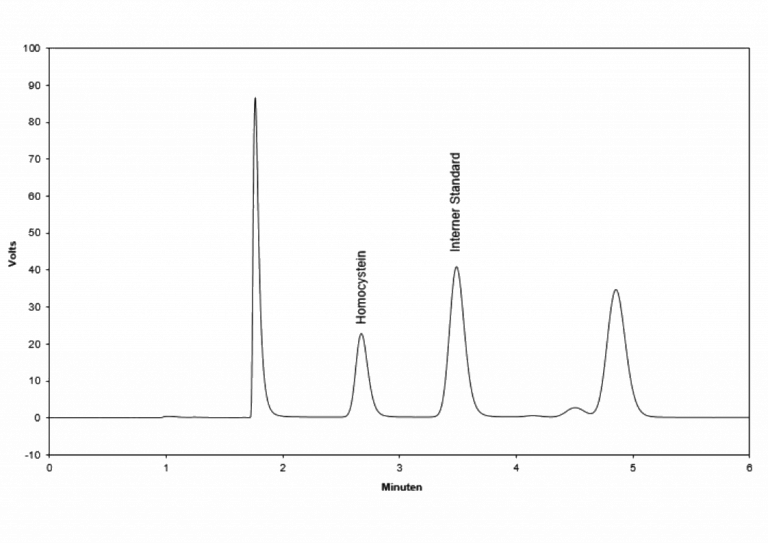Homocysteine
Homocysteine is an amino acid, which is produced out of methionine. It is not ingested by nutrition. Homocysteine is rapidly degraded to cystein when vitamin B6, folic acid and vitamin B12 is sufficiently available. Increased levels of homocysteine will damage heart and blood vessels. Meanwhile it is an established risk marker for cardiovascular disease. US-studies demonstrate that 40% of heart attacks are caused by increased homocystein levels. Also the risk for stroke is increasing by elevated homocystein concentrations in plasma. A participation of homocystein in morbus alzheimer and morbus parkinson are under discussion. The reason for high homocysteine levels are a lack of vitamamin B6, folic acid and vitamin B12 and/or a defect in the enzym cystathion synthase, which catalysis the reaction from homocystein to cystein.
Increased homocysteine concentration can be reduced by the supplementation with folic acid, vitamin B6 and vitamin B12.
Technical data
Sample EDTA-plasma, serum
Sample volume 50 µl
Detector Fluorescence Ex. 385 nm Em. 515 nm
Method isocratic
Determinations 100
Ordering Information
IC2801 Testkit
IC2801ko Controls (2 level each 250 µl lyoph.)
IC2801rp HPLC column

Principle of the method
For the determination of homocysteine the sample is reduced and derivatised in one step. The albumin bound and the oxidized homocysteine is reduced and converted into a fluorescent probe. During a precipitation step high molecular substances are removed. The sample is cooled, (2-8°C), centrifuged and injected into the HPLC system.
The isocratic separation via HPLC at 30°C using a „reversed phase“ column. One run lasts 5 minutes. The chromatograms are recorded by a fluorescence detector. The quantification is performed by the delivered plasma calibrator; the concentration is calculated via the “internal standard method” by integration of the peak areas resp. Peak heights.